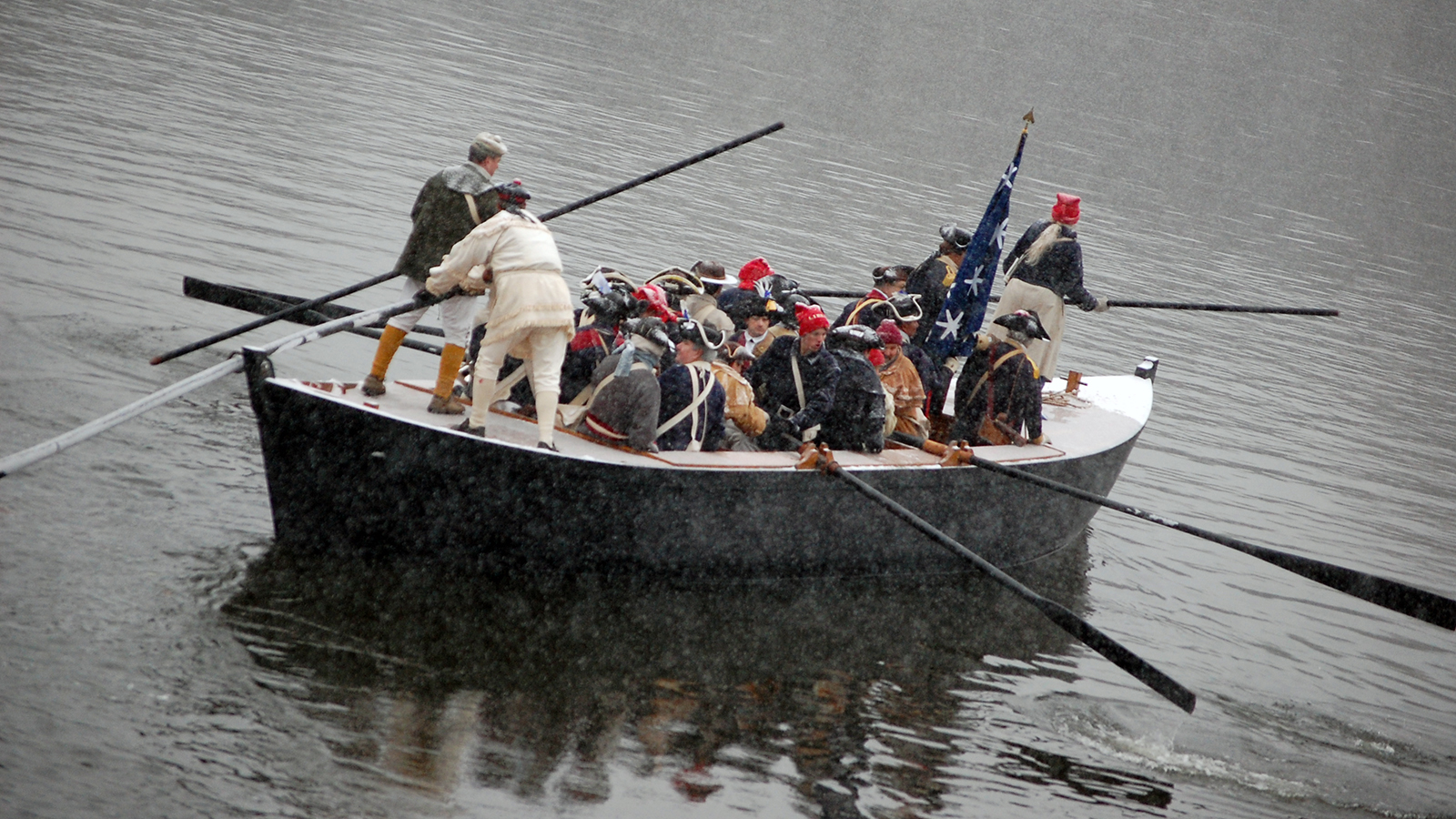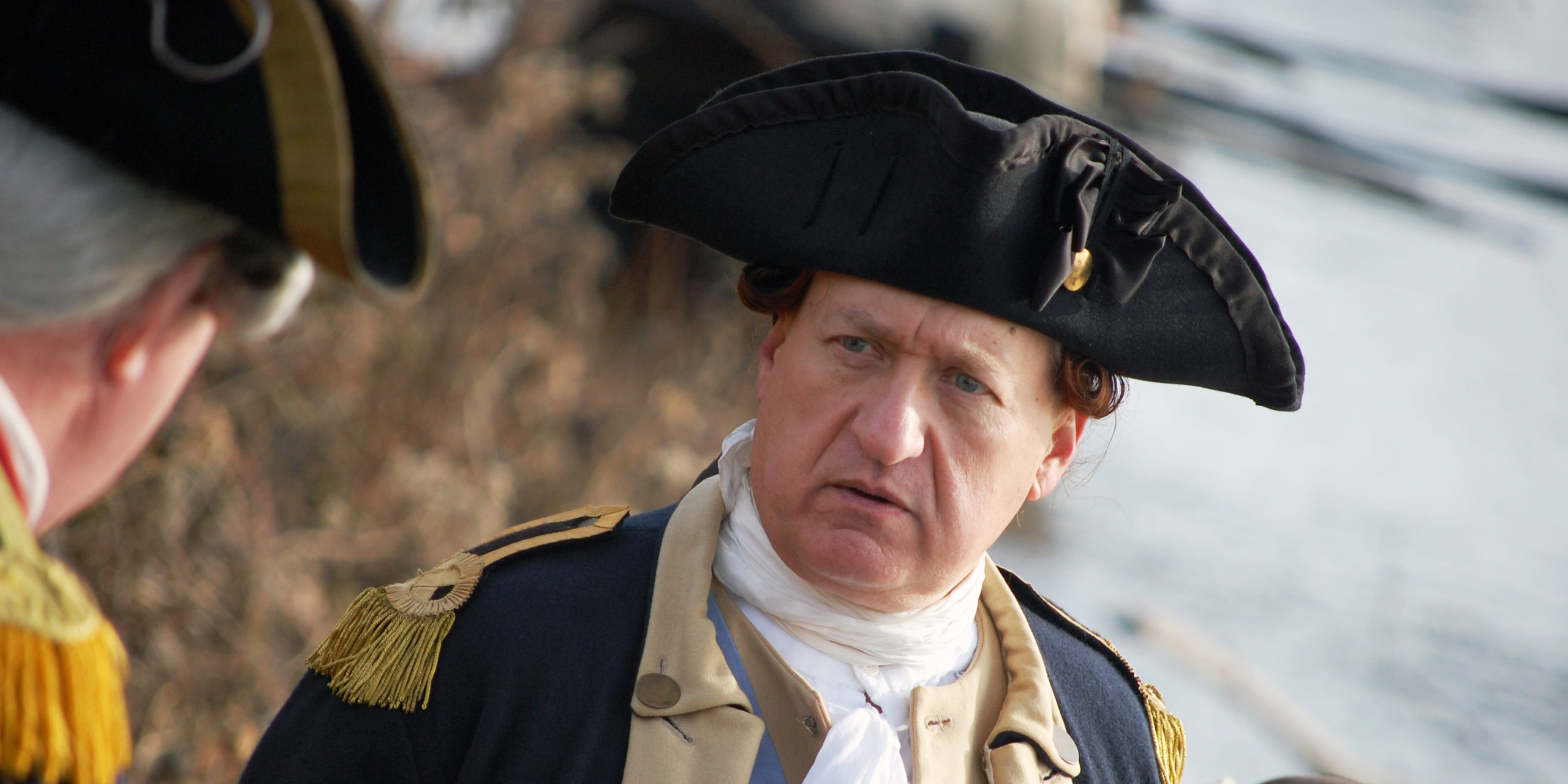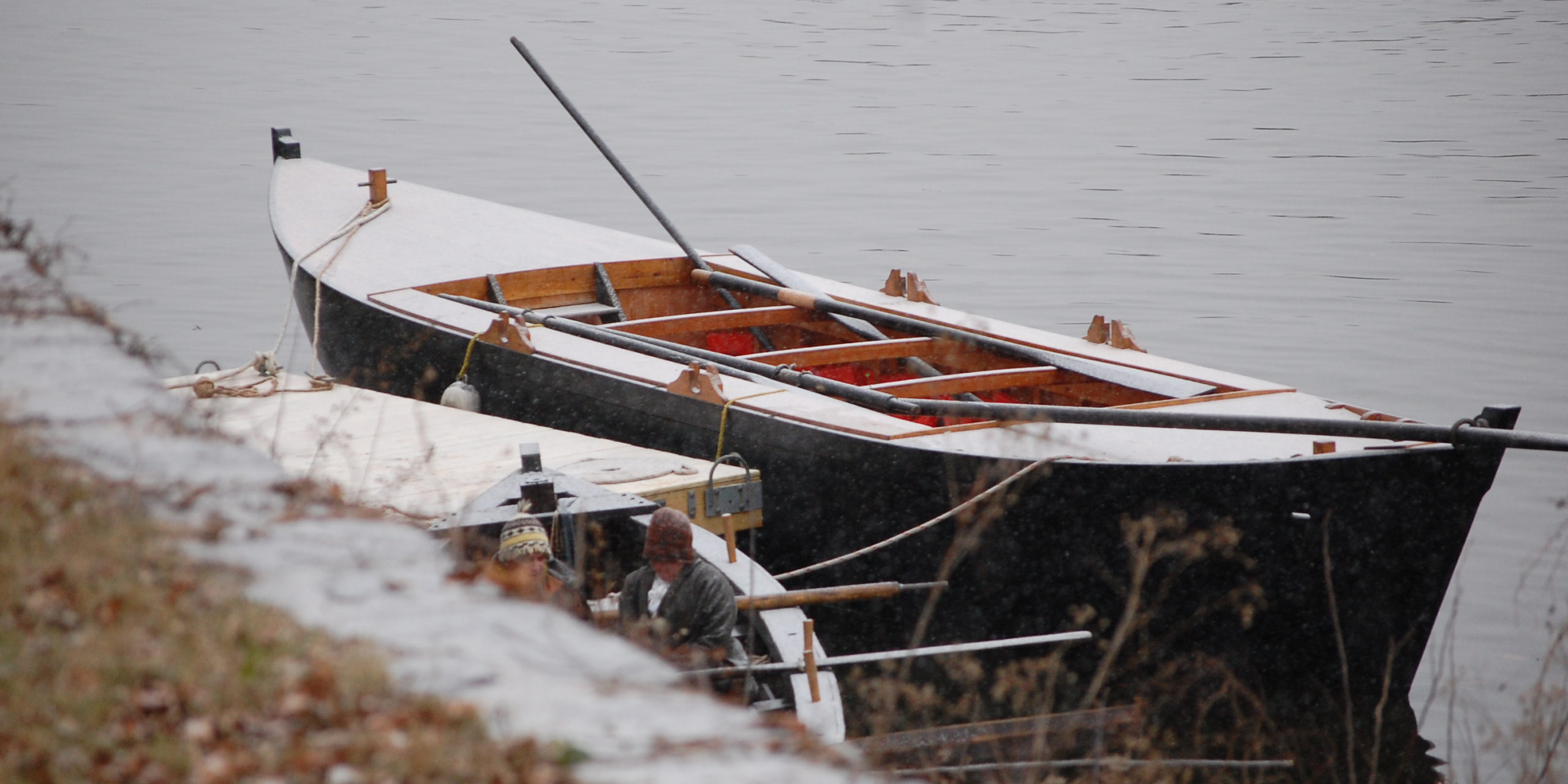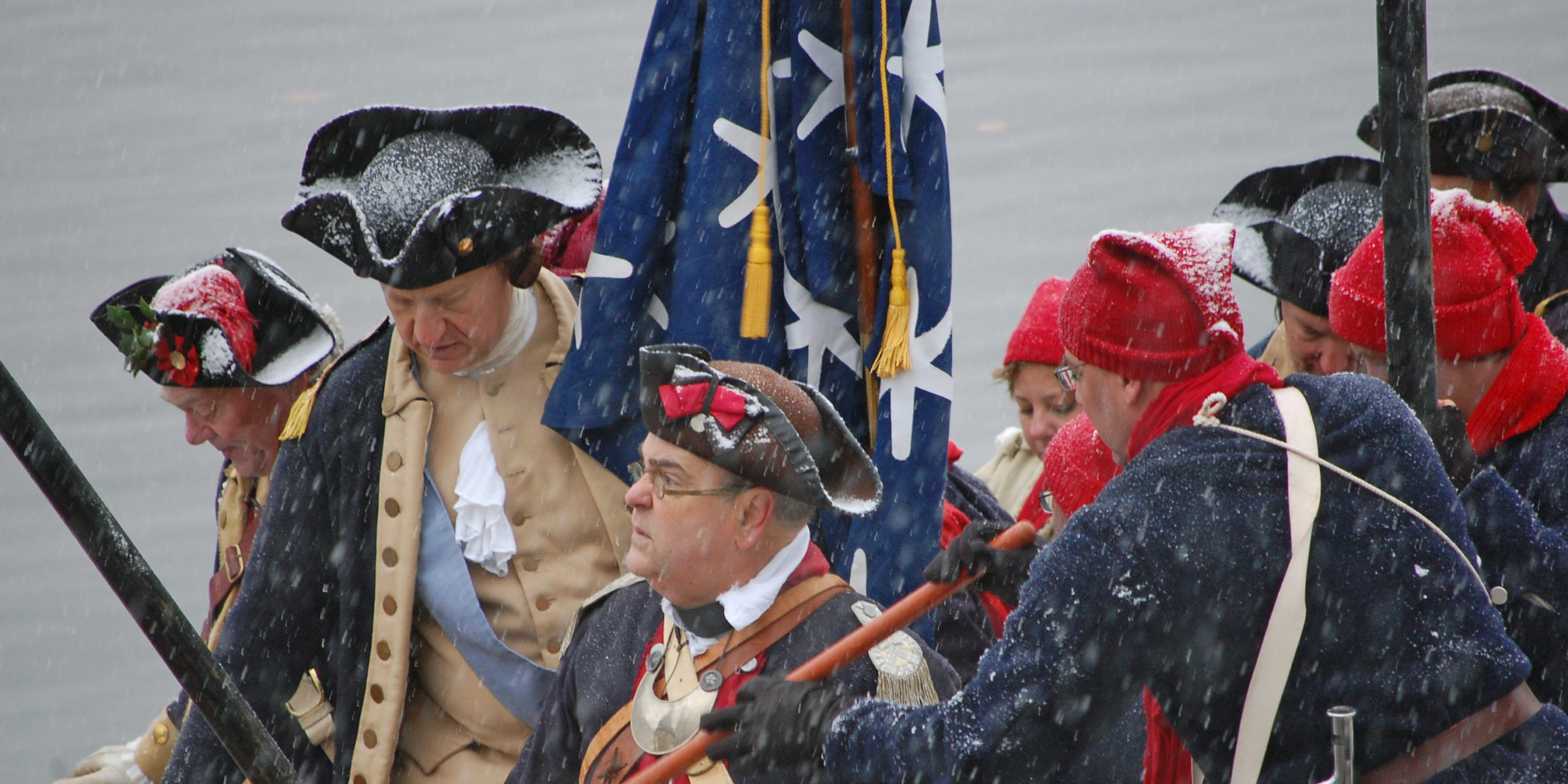Myths and Legends About the Crossing

Washington’s crossing of the Delaware River and subsequent battles were an early turning point in the Revolutionary War. It’s no surprise this military achievement has been venerated for generations. But over the years, untrue or disputed elements about the crossing have also surfaced.
This page lists some of the most common misconceptions about the crossing and Battle of Trenton. This list will be updated as we become aware of other false or misleading claims.
Myth: The Crossing Happened on Christmas Eve
The crossing began on Christmas Day around 6 PM in the evening and continued into the early hours of December 26, 1776. After crossing the Delaware River, Washington’s troops marched to Trenton, New Jersey, where the Battle of Trenton occurred on December 26.
Myth: Washington Crossed the Potomac River
The Continental Army crossed the Delaware River, which separates Pennsylvania and New Jersey near Trenton.
Myth: The British Were Stationed at Trenton
Trenton, New Jersey, was indeed held by the enemy forces, but the soldiers stationed there were not British. They were Hessians: mercenaries hired from what we now call Germany. About 30,000 Hessian soldiers fought on the side of the British during the American Revolution.
Myth: The Hessians Were Drunk or Hungover
There’s no evidence that the Hessians were drunk when the Battle of Trenton began. The Hessians may have performed poorly because they were exhausted from weeks of attacks on their patrols and post stations. Even when they weren’t on duty, Hessian soldiers rested very little. They slept in full uniform with muskets in hand.
This myth may have originated from the investigation that was conducted after the Hessians lost the Battle of Trenton. Deputy Adjutant General Kemble of the British army described Hessian Colonel Johann Rall as a drunkard, which may be the origin of this myth.
Myth: Many Hessians Were Killed During the Battle of Trenton
The Continental Army lost only two soldiers on the march to Trenton, and a few were wounded during the battle. The Hessian forces lost more, but it was by no means a bloodbath. Twenty-two Hessians were killed, 83 were wounded, and almost 900 were captured. One of the Hessians killed in action was their commander, Colonel Johann Rall.

Myth: Thomas Paine’s “The American Crisis” Was Read Before the Crossing
Today’s modern-day crossing reenactments include a reading from Thomas Paine’s The American Crisis pamphlet. The pamphlet had been published in December 1776, just a few days before the crossing. Though Washington acknowledged that Paine’s writing had a “powerful effect on the public mind,” there is no documentation in his papers stating he ordered it to be read to the troops prior to the crossing. Paine himself never stated that The American Crisis was read to the troops, nor was he present for the crossing.
Myth: The Soldiers Crossed in Small Rowboats
Several misconceptions arise from Emanuel Leutze’s famous “Washington Crossing the Delaware” painting, created in 1851. One of the most obvious discrepancies is the size of the boat. The primary vessels used to cross the Delaware River were Durham boats, which are much larger than the boat pictured in the painting. Durham boats are about 40 to 60 feet long, eight feet wide, and weigh about 4,600 pounds when empty.

Myth: The Stars and Stripes Flag Was Carried
Leutze’s painting shows an American flag that wasn’t adopted as the national flag until about six months after the crossing. It’s hard to say which flag(s) were flown during the crossing – if any were flown at all. Each regiment had its own flag there, and Washington had his own flag as well. However, the weather was bad on the night of the crossing, so it’s possible that the flags weren’t flown in those conditions.
Myth: James Monroe Crossed with George Washington
Future president James Monroe is pictured in the Leutze painting right behind General Washington. But Monroe actually crossed with a different commander: William Washington of the Third Virginia Regiment.
Myth: Washington Crossed the Delaware River First
We don’t know the order in which soldiers crossed the river, nor do we know who was on which vessel. It’s possible that Washington crossed early, but it’s also understandable that he would have crossed later, or even toward the end of the crossing.

Myth: Your Ancestor Crossed with Washington
In many cases, a great-great-great grandfather participating in the crossing is more likely to be a family legend than a documentable fact. People frequently request a list of the 2,400 men who crossed, but for several reasons, that list simply doesn’t exist. (Work is underway, though.)
Recordkeeping in 1776 was spotty at best. Soldiers constantly moved among different units, brigades, and regiments. Many times, muster rolls were incomplete or nonexistent. Officers are the easiest to confirm since they were better known.
However, even if you know your ancestor was in a certain regiment and that regiment crossed, it doesn’t prove that your ancestor was among them. He may have been unable to cross due to illness, which was very common. Or his enlistment may have expired after the last muster but prior to the crossing. For example, if the last muster we can locate is in November, but the soldier left on December 1, then he would not have crossed.

Myth: In Leutze’s Famous Painting, Prince Whipple is Pictured Near Washington
Leutze’s painting features a soldier of color at Washington’s knee. While some say this is a man named Prince Whipple – an African who served in the Revolutionary War – there’s no documentation proving he was at the crossing. However, the Marbleheaders – an integrated regiment – were an important part of the crossing. We don’t know whether the man in Leutze’s painting is meant to be Prince Whipple himself or if he represents the presence of Black soldiers in the Continental Army.

